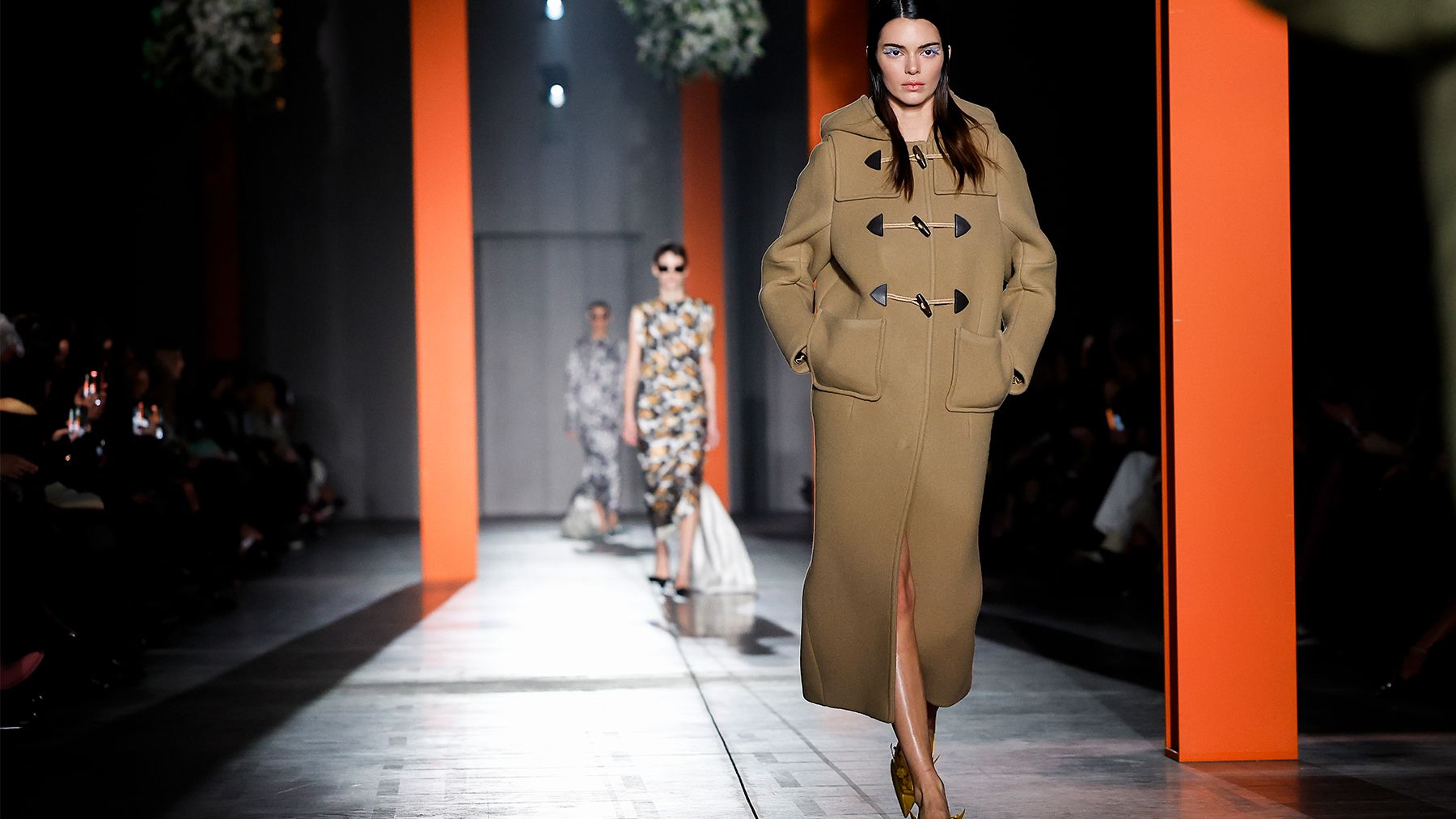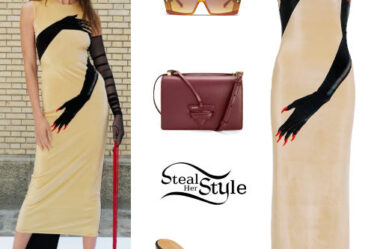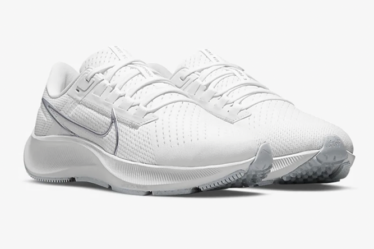
MILAN — The invitation for the new Prada show came tucked inside the massive catalogue for Recycling Beauty, the current exhibition at the Fondazione Prada in Milan. Co-curated by Salvatore Settis, Italy’s pre-eminent historian, it covers the vast sweep of human history, but its essence can be distilled to an observation made by Miuccia Prada in her introduction: creative reuse feeds our concept of modernity — the past fuels the future, in other words — while at the same time reinforcing enduring human values, like love, and care for each other.
That was also the essence of the new collection she and Raf Simons presented. They called it Taking Care. “The real meaning of what we do is to bring importance to the everyday,” was one Miuccia quote in the shownotes. And here, the everyday meant clothes you recognised as outfits that served a purpose, most obviously, a nurse’s white cotton uniform and an army-brown shirt and tie, but also a wedding dress, equally uniform in its own way. The everyday was elevated by making that nurse’s uniform floor-length, adding a train, or, conversely, cropping the embroidered layered veiling of a wedding dress into a short skirt and pairing it with a plain grey sweater and a brown suede blazer.
I doubt it was a consideration with Miuccia and Raf when they were creating their collection — uniforms and utilitywear have long been appealing tropes for the duo — but nurses in the UK are currently in a protracted and popularly supported battle with the staggeringly inept Tory government for long overdue recognition of the value of their work. So a major Italian brand attaching fashion currency to uniforms that became emblematic of nothing less than a struggle to survive during the years of the pandemic felt like unwitting recognition. “Because these garments are important, the wearers are important,” said Simons in another shownote quote. “Because every day of life counts,” Miuccia added. I re-iterate: the collection was called Taking Care.
But it wasn’t only the medical, it was also the military subtext that resonated. Vladimir Putin launched his brutal attack on Ukraine a year ago. Since then, we have all been schooled on a daily basis in the struggle of ordinary people against a tyrannical invader. So it made sense that protection was a subtext here: padded tops and skirts, cocooning parkas and duffels, substantial leathers, an abbreviated peacoat. Miuccia said she wanted “warmth.” All of these clothes, so functional and yet, in their proposed proportions, up-to-the-minute fashionable, suggested a contemporary, pragmatic take on beauty, where emotion co-opts glamour. We have to look out for each other. Fashion is a mirror. It reflects.
And, every so often, it projects too. When the audience entered the vast show space at the Fondazione Prada, they were confronted by a room that was bare of the usual design flourishes that accompany a Prada presentation. Instead, a shadowy industrial expanse, with a low ceiling supported by metal columns. There was, however, a strong and incongruous floral scent, the source of which became apparent as the show began and the ceiling rose to reveal that the columns were wreathed in lilies. A symbol of love in any number of weddings, lilies are also a funeral flower. Massed in the ceiling above us, they felt like a beautiful but sad acknowledgment of beginnings and ends. The show closed to the graceful arc of Johann Strauss’s “Blue Danube,” the waltz of deep space in Kubrick’s “2001: A Space Odyssey.” The past fuels the future, for good and bad.



